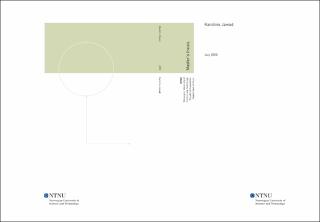| dc.description.abstract | Hardware for audio and music is subject to inscribed social processes and can bring
them to appearance through visual cues and language. This dissertation investigates
how established hardware for audio and music can communicate issues related to
gender. In particular, it looks into (1) how language of live interfaces in music can
inform about whether and how gender shapes musical tools; and (2) to what extent
can gender bias in the design of musical interfaces be detected through visual
cues. With a mixed methods approach, this thesis aims to create a richer picture on
potential gender identities in hardware for music. Two studies are presented: an
interview analysis with expert women from music technology and a quantitative
study on gender reception of audio and music hardware. The findings and results
suggest that gender perception for established hardware in audio and music exists.
To follow up, design recommendations are proposed on how to approach the development
of interfaces under the notion of pluralism. This implicates to involve
people with different backgrounds in musical hardware and DMI design processes,
with implications for academia and industry in order to make musical hardware
more accessible. | |
